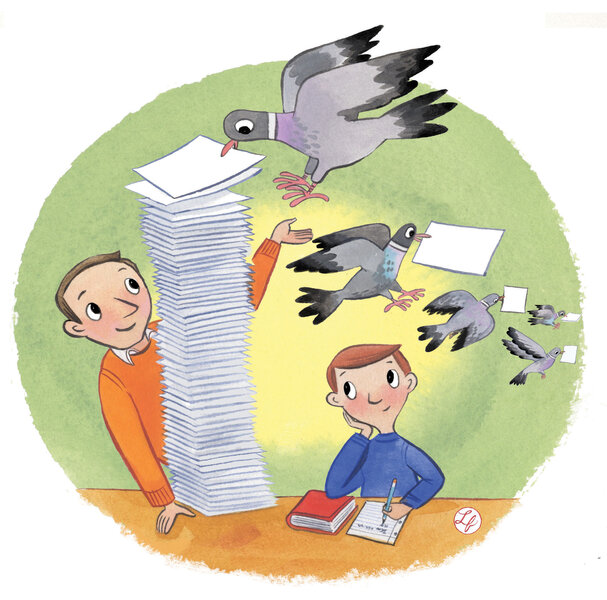Word by word
Loading...
Anne Lamott, a peerless inspirer of good writing, tells the story of her brother, age 10, agonizing over his science report on birds. “He’d had three months to write [it]. It was due the next day,” she explains. “He was at the kitchen table close to tears, surrounded by binder paper and pencils and unopened books on birds, immobilized by the hugeness of the task ahead. Then my father sat down beside him, put his arm around my brother’s shoulder, and said, ‘Bird by bird, buddy. Just take it bird by bird.’ ”
We’ve all been there, whether as the report writer, the parent, or the teacher trying to coach and coax the project to completion. I remember my own daughter struggling with just such a report, an English assignment requiring her to go beyond a synopsis of the plot of “April Morning,” to delve deeper than a mere summary of the characters and their actions. She had to step outside her reading and writing comfort zone.
A seventh-grader, Hilary was in a typical, bumpy transit from her competent, concrete summaries of the text to the subtextual observations her teacher was training the class to do. The time had come in her growth as a reader and writer to explore the abstract sense of things, the figures in language, the author’s intention.
It was a painful struggle. It seemed to her to be unfair: Words could be about something other than what they say? Go figure!
“I can’t interpret what happens,” she moaned as I attempted the role of Mr. Lamott. “It just happens. There’s no interpretation. It’s about what it’s about. That’s all there is to it!”
Which bird would come to my rescue?
The parallel scene in my own schooling was also seventh grade, working long and hard one night to make my customary book report poster by pasting a collage of magazine photos on poster board. Summarize the plot, illustrate the trials and tribulations of the characters in “The Outsiders,” add a few photos clipped from the newspaper – voilà! Done. My goose, however, was cooked that year.
When Mr. Katz returned my dutiful work, his comment insisted that I interpret the story, think about “the why” of the story; think about the writer’s motivation in telling the story. Apparently, the story meant something other than what it said. The writer had been saying one thing and meaning another. It was about more than what it was about. Not fair! Go figure.
But what a thrill I felt in the subsequent moments of revelation, when the “inner meanings” became clear to me, and I left behind the illustrated book report (with fancy cover, huge titles, and fabulous collage) forever. A writer actually has control over this stuff? A writer isn’t just recording the way it happened? The story is something imagined! I took a giant leap toward critical examination of the craft of assembling words in a particular order for a particular reason.
From that point on, assignment by assignment, bird by bird, my writing took wing.
We’re all accustomed, of course, to a world that is carelessly worded. It’s not just a seventh-grade rite of passage. “It’s about...” is a constant refrain, as if meaning were something obvious, declarative, visible, agreed upon, and simple. And what Hilary was encountering that evening – as we all do, at some point – is the opening of the mind’s eye to the “more” that’s there. I don’t think even she thought it was just “about” a book report in seventh grade. The transition takes time, timing, and patience, like anything learned.
Today, Hilary has students of her own, taking it bird by bird, one word in front of another, until they, too, soar as young writers.
I’ve wondered what Mr. Katz’s progress reports said about me: “In Language Arts, Todd is taking it ‘bird by bird’ and making some progress in verbal expression.” Those reports probably are still filed away somewhere in my mother’s archive, and still classified Top Secret. Parent-teacher conferences, I imagine, went like this: “Now, about his handwriting....” How do you take cursive bird by bird? My chicken scratch has not changed much, but may never come home to roost.








